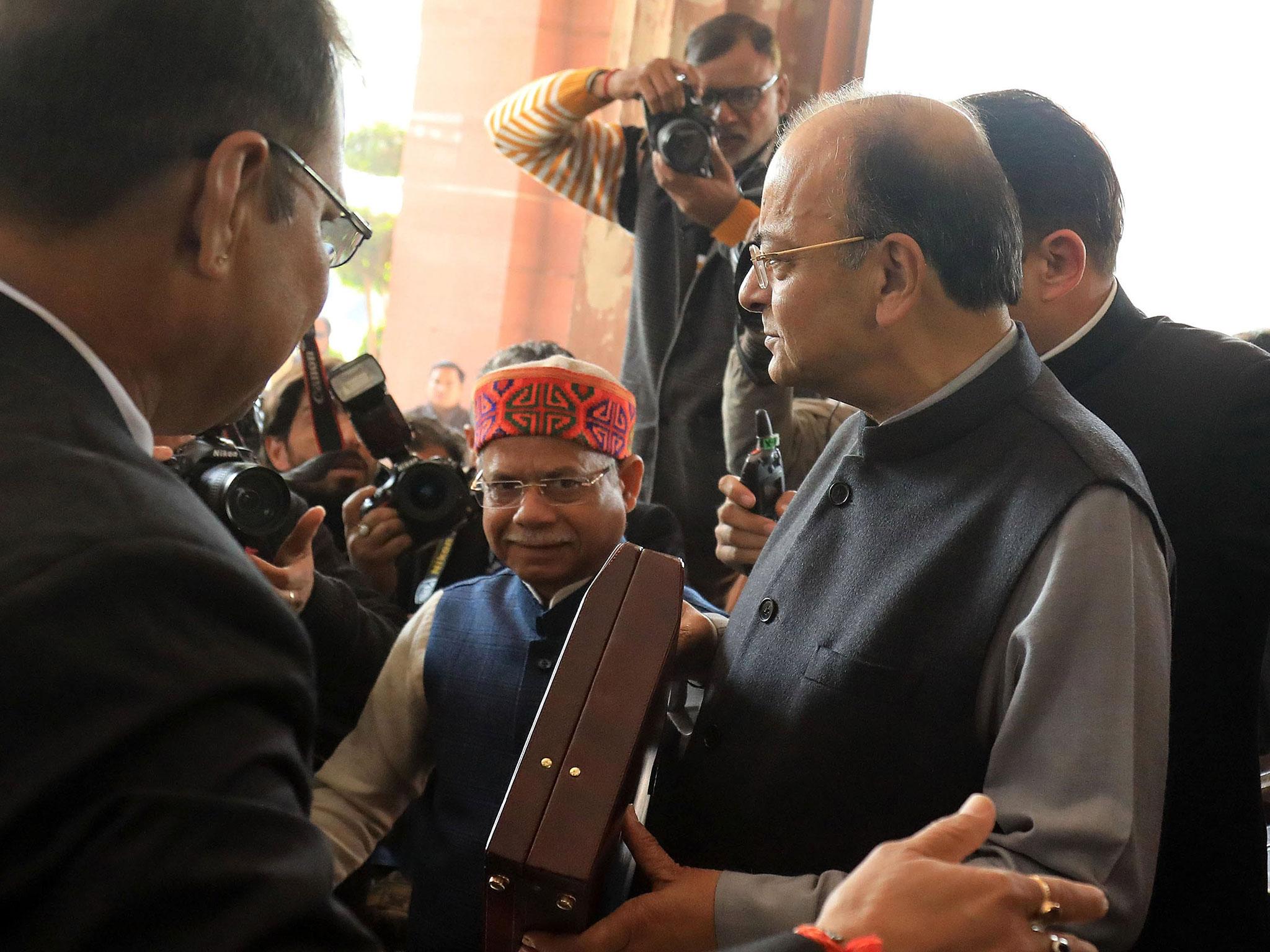India Budget 2018: Who are the biggest winners and losers?
Analysis: Any claims to boost farmers’ prospects will inevitably be seen as political, coming ahead of a series of key elections. But this budget recognises India’s most pressing concerns – and seeks to address them

Your support helps us to tell the story
From reproductive rights to climate change to Big Tech, The Independent is on the ground when the story is developing. Whether it's investigating the financials of Elon Musk's pro-Trump PAC or producing our latest documentary, 'The A Word', which shines a light on the American women fighting for reproductive rights, we know how important it is to parse out the facts from the messaging.
At such a critical moment in US history, we need reporters on the ground. Your donation allows us to keep sending journalists to speak to both sides of the story.
The Independent is trusted by Americans across the entire political spectrum. And unlike many other quality news outlets, we choose not to lock Americans out of our reporting and analysis with paywalls. We believe quality journalism should be available to everyone, paid for by those who can afford it.
Your support makes all the difference.In 2016 India’s Prime Minister, Narendra Modi, pledged to double farmers’ incomes by 2022. While the pledge may have been aspirational, reliant on good weather as much as government policy, the 2018/19 budget, announced today, demonstrates the depth of Delhi’s commitment to the agriculture sector.
There’s clearly a political edge to any moves to bolster agriculture: any solace to rural India will be described as political opportunism until most people in India are not engaged directly or indirectly in the agricultural sector. And with a number of state elections coming up this year and a general election next – suggestions that it will be brought forward have increased in volume since the budget – a politically astute budget is unsurprising. At the same time, there is a real sense of crisis in Indian agriculture which the budget is attempting to ameliorate.
With its Keynesian undertones, the budget announces both direct and indirect support for rural India; it increases significantly the price at which the government purchases agricultural produce and offers a range of further support through initiatives in areas such as irrigation.
There is a significant hike in spending on infrastructure – roads, railways, ports and waterways – with a major allocation for rural infrastructure.
While government spending on infrastructure has been growing, the 2018/19 budget appears to accept that innovative funding models to pay for rural projects are unlikely to work – instead, rural highways will have to be funded from overall taxation, as is generally the norm.
The other bold initiative focuses on healthcare. One hundred million poor families (so around half a billion Indians in total) will receive up to 500,000 rupees for medical care under a health insurance programme. Given the correlation between ill health and poverty, this should have implications for the economy as well as healthcare itself. At the moment poverty effectively excludes many Indians from private healthcare.
Education too received a boost, with several proposals including teacher training. There have long been concerns over the quality of Indian education. In particular, even where schools exist physically, teachers themselves are absent.
As is often the case with India, the question will be in the implementation. While there are bound to be hiccups, the current Indian government does appear to realise the need for on-the-ground, visible change. The recent state election demonstrated that while the BJP is clearly favourite to win another term, it is not invulnerable. If the changes do not reach the “last mile”, then they will accrue neither the economic nor the political benefits.
The downsides? Increased taxes will raise inflation, potentially exacerbated by sustained government borrowing; a 20 per cent rise in customs duty will affect imports of mobile phones (though benefit domestic producers and encourage other foreign firms to set up manufacturing plants in India) and some of the revenue projections appear optimistic. On balance though, this is a budget that recognises the most pressing challenges which India faces and attempts to provide solutions to them.
Gareth Price is a senior research fellow at Chatham House working on South Asia
Join our commenting forum
Join thought-provoking conversations, follow other Independent readers and see their replies
Comments